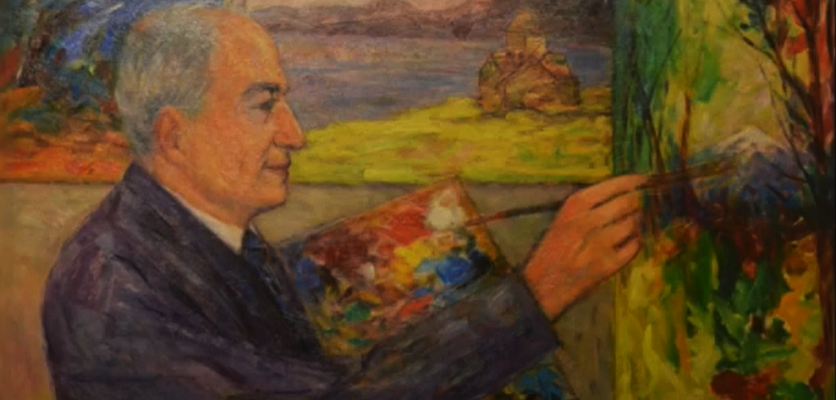On this day - Mar. 15, 1907: French-Armenian painter Zareh Moutafian was born
March 15, 2021
On this day in 1907, French-Armenian painter and art critic Zareh Moutafian was born.
Today we celebrate the improbable life of Zareh Moutafian, the French-Armenian painter who was born on March 15, 1907, and went on to become a prolific art critic. Referring to Ivan Aivazovsky, he wrote, “he Armenianized the sea.”
.png) Screenshot: "Painting After the Genocide"— Zareh Mutafian (1907-1980)
Screenshot: "Painting After the Genocide"— Zareh Mutafian (1907-1980)Moutafian was 8 years old when his family was massacred in the Black Sea town of Unye. He was left for dead, and found himself in a column of deportees, but ended up in an orphanage, which, for safety reasons, was transferred to Greece from Samsun, only to be bombed by Italian pilots.
“Mussolini asked the people in charge to choose 100 orphans to be transferred to Italy, where they would be educated at the expense of the Italian government, and my father was one of those 100,” says Claude Moutafian, a leading historian, in a video dedicated to his father.
The young orphan was educated by the Mekhitarists, mastering the beauty of the Armenian language, and graduated from the Accademia di Brera in Milan with accolades. His style matched with the different periods of his life, characterized by realistic portraits in Italy, followed by peaceful landscapes in Switzerland, and impressionist fauvist paintings in France.
“All of a sudden his painting turned into a fireworks display,” explains his son.
Moutafian continued to paint portraits at his Paris studio on Rue Navarin, which also served as a hub for Armenian writers, artists, and intellectuals during WWII. He produced a series of Armenian themed paintings after visiting Soviet Armenia.
The only time Moutafian ever painted the genocide was in 1965, for an exhibition in Paris. On the centenary of the genocide, his works were on show at the National Gallery of Armenia.
Towards the end of his life and until his death in 1980, Moutafian created marine paintings in Brittany, finding “the same sky, the same quality of water which, once upon a time, I had enjoyed so much on the shores of the Black Sea, where, still a very young boy, I had contemplated to become a painter one day,” as he once observed.
With worldwide exhibitions and publications like "Classical Schools and Modern Trends in Painting," Moutafian remains an icon of painting after the Armenian Genocide.
Check out Moutafian's last posthumous exhibition "Painting After the Genocide" in our video section below!
Video
Join our community and receive regular updates!
Join now!






Attention!